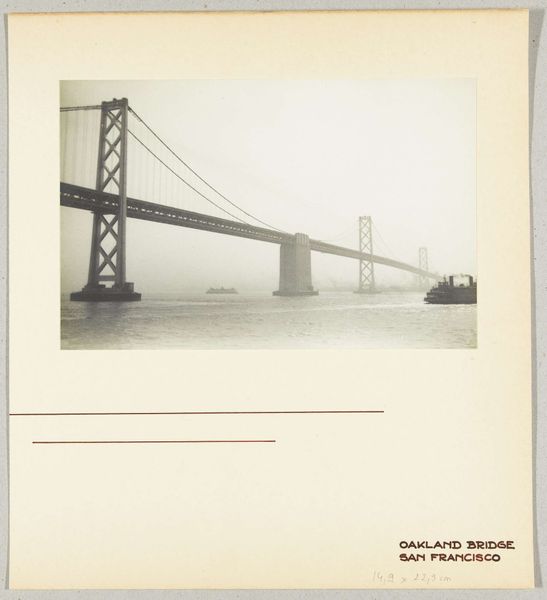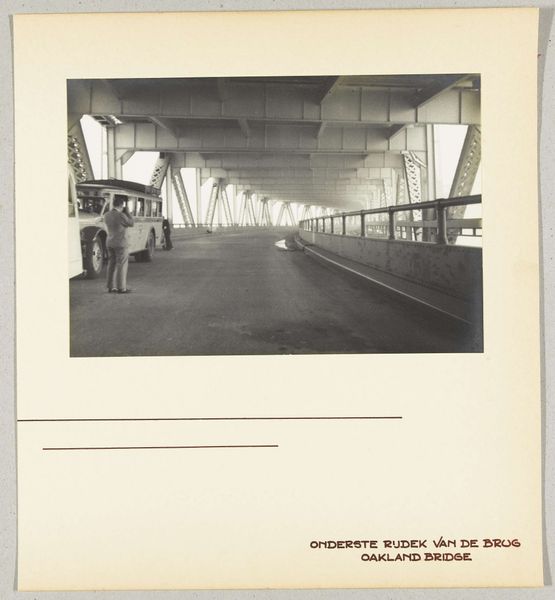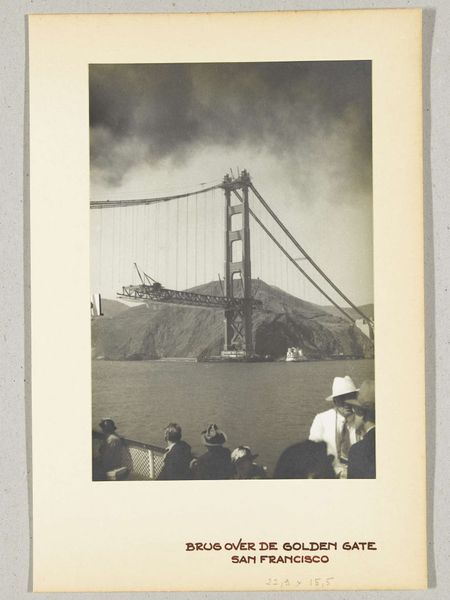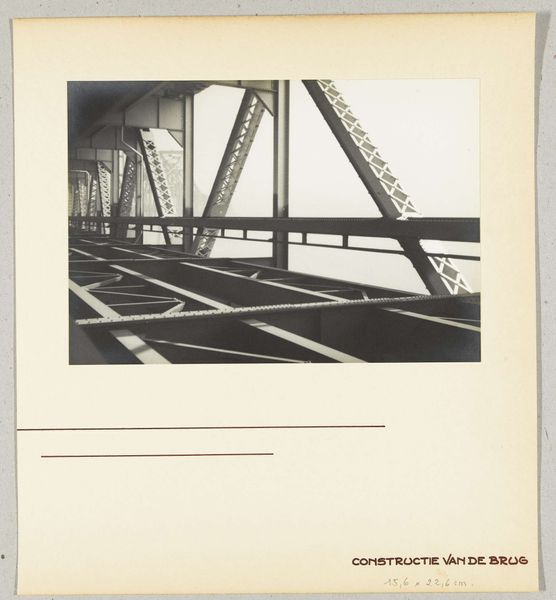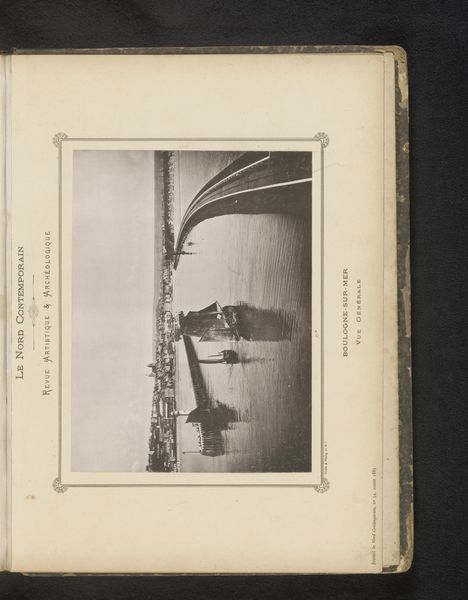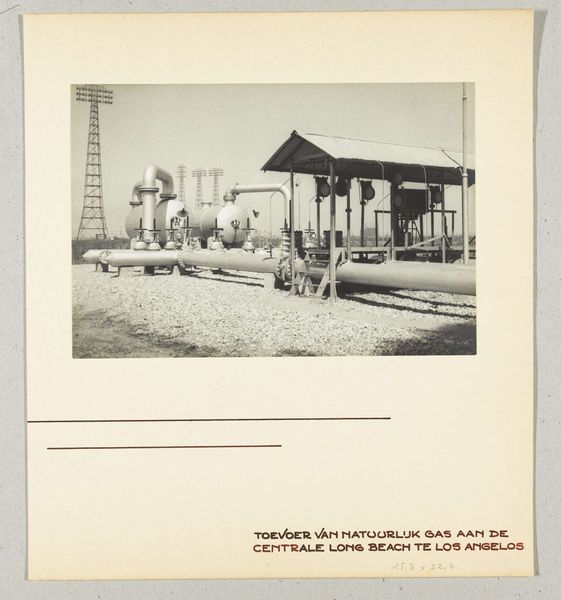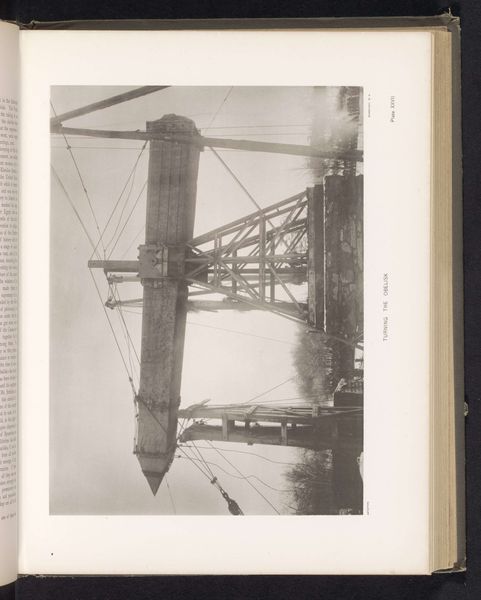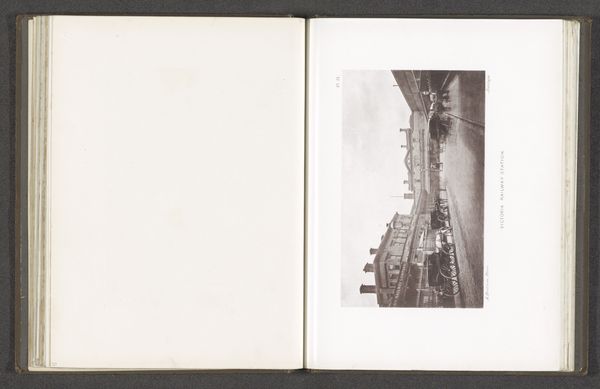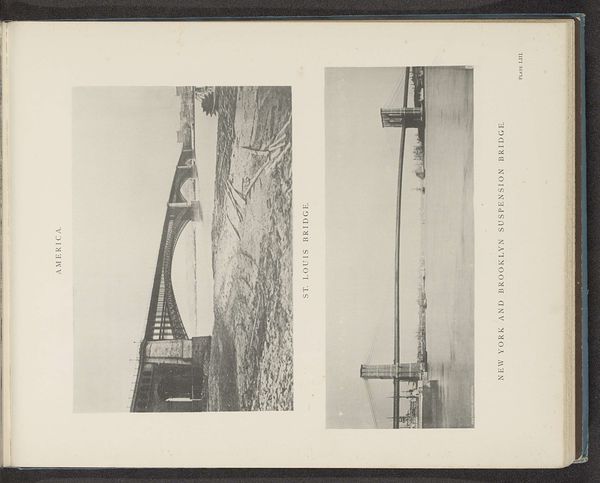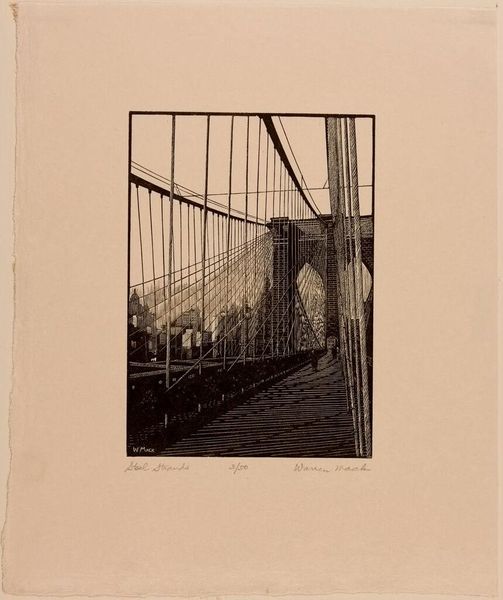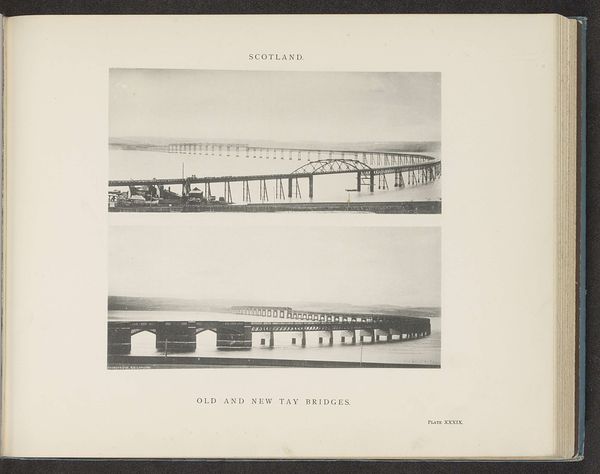
photography, gelatin-silver-print
#
photography
#
gelatin-silver-print
#
cityscape
#
realism
Dimensions: height 154 mm, width 230 mm, height 315 mm, width 272 mm
Copyright: Rijks Museum: Open Domain
Curator: Here we have a gelatin-silver print by Wouter Cool, titled "Oakland Bridge, San Francisco," created in 1936. My first thought? The bridge almost fades into the sky. It evokes a sort of monumental yet delicate atmosphere. Editor: It’s compelling how Cool has captured a liminal space of technological advancement. Look at those support structures! This isn't just a picture, it's a document of industrial labor. We’re observing the making of a massive piece of infrastructure. The men, in their hats, serve as markers of scale but also remind us of the human cost and effort in constructing these modern behemoths. Curator: The workers definitely lend it an immediate feel—it’s as though we're there with them, watching history unfold. And it makes you consider, doesn't it, how photographs like these helped mythologize the industrial era? Even now, it hums with the grand promises of the Machine Age. Editor: Absolutely! And the medium itself—gelatin-silver print—becomes a key element. It was an affordable and reproducible process that democratized image making and consumption. Mass production enabling, you could argue, its own visual rhetoric celebrating the efficiency of materials. I see these photos as more than mere images; they’re material objects that helped normalize our relationship with manufactured spaces. Curator: Right. Even its monochrome enhances this sense of realism. Stripping away the color allows us to concentrate on forms and textures and how that supports this idea of documenting technological progress. Do you think that impacts how audiences responded to this bridge and photography as a whole at the time? Editor: Without question. I think the starkness drove home both the imposing scale and the functional beauty they hoped it represented. Also, by focusing our attention towards these men, the artist reminds of the hands responsible for assembling its materials. It almost speaks of a paradox in an industrialized world that continues to depend on the working-class man for every leap toward modernity. Curator: Fascinating. This image encapsulates that very tension. I leave it pondering its relationship to labor.
Comments
No comments
Be the first to comment and join the conversation on the ultimate creative platform.
